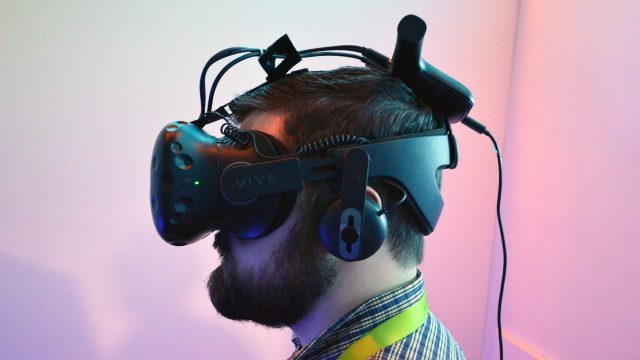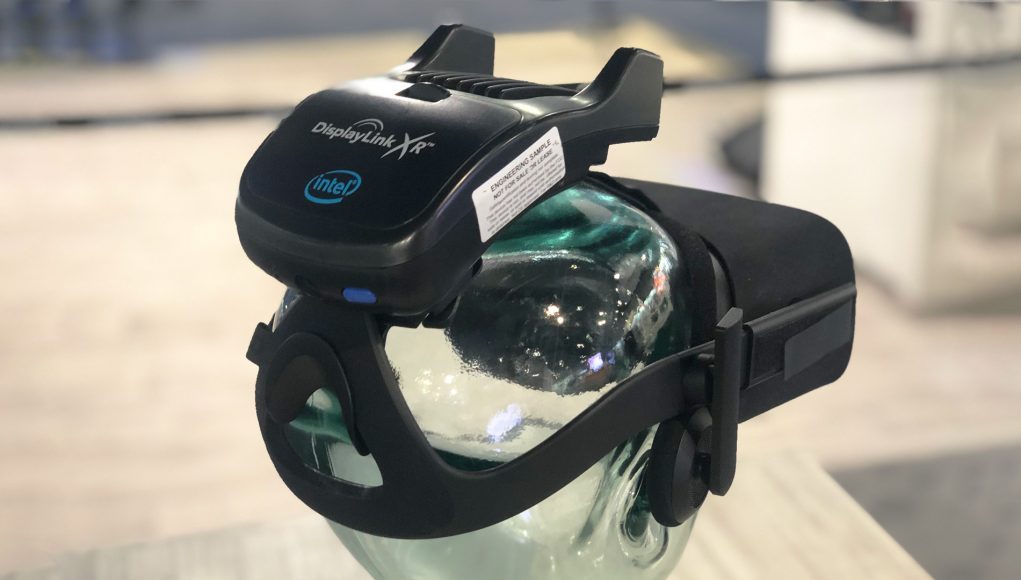Connectivity company DisplayLink is showing a reference design for a 60GHz Oculus Rift wireless adapter at CES 2019.
DisplayLink created the DisplayLink XR wireless adapter reference design that would go on to become the Vive Wireless Adapter. The unit pairs DisplayLink’s compression technology with Intel’s 60GHz WiGig tech, enabling enough bandwidth for a pretty compelling wireless experience on the Vive that’s unmatched by WiFi solutions.

Now the company is showing off a Rift-compatible version of the adapter, both as a proof of concept and a reference design that could be the foundation for another company to further develop into a retail product. The reference design could also be adapted for headsets other than the Rift.
For the wireless Rift adapter, the unit accepts the Rift’s USB and HDMI inputs, and sends them wirelessly to the host PC, while also powering the headset. The battery in this unit is built into the adapter itself, though in the case of the Vive Wireless Adapter, the battery is a separate component which goes on your belt or in your pocket.







